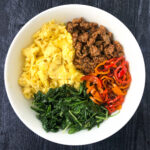Embark on a culinary adventure with vibrant Indian Banting curries! Imagine rich, aromatic sauces, bursting with flavor and texture, yet perfectly aligned with your dietary needs. This collection unveils authentic recipes and clever adaptations of classic dishes, ensuring a delicious and healthy experience. Discover the secrets to creating perfectly balanced curries, from mastering spice blends to achieving the ideal consistency. Prepare to tantalize your taste buds and impress your guests with these unforgettable creations.
We’ll explore five authentic Indian Banting curry recipes, each detailed with step-by-step instructions and stunning visuals showcasing their vibrant colors, textures, and enticing garnishes. Learn how to adapt beloved classics like Butter Chicken and Rogan Josh, reducing carbohydrate content without sacrificing flavor. Master essential cooking techniques, including the art of spice blending and choosing the right fats for optimal results. We’ll also provide delicious Banting-friendly side dish suggestions and troubleshoot common issues, ensuring your culinary journey is smooth and rewarding.
Variations on Classic Indian Curries Adapted for Banting
Embark on a culinary journey where the rich tapestry of Indian flavors meets the principles of the Banting diet. These adapted recipes allow you to savor the depth and complexity of classic Indian curries without compromising your dietary goals. We’ll explore how simple substitutions can transform beloved dishes into Banting-friendly delights, preserving their vibrant taste profiles.
Butter Chicken Adapted for Banting
This adaptation of the classic Butter Chicken replaces the traditional creamy sauce base with a rich, coconut milk-based alternative. The result is a luxuriously smooth and flavorful curry that is both satisfying and low-carb.
- Ingredients:
- 1.5 lbs boneless, skinless chicken thighs, cut into bite-sized pieces
- 1 large onion, finely chopped
- 2 cloves garlic, minced
- 1 inch ginger, grated
- 1 tbsp garam masala
- 1 tsp turmeric powder
- 1 tsp cumin powder
- 1/2 tsp chili powder (adjust to taste)
- 1 can (13.5 oz) full-fat coconut milk
- 2 tbsp ghee or coconut oil
- Salt and pepper to taste
- Fresh cilantro, chopped (for garnish)
- Instructions:
- Heat ghee or coconut oil in a large pan or pot over medium heat. Add onions and sauté until golden brown.
- Add garlic and ginger and sauté for another minute until fragrant.
- Stir in garam masala, turmeric, cumin, and chili powder. Cook for 30 seconds, stirring constantly, until fragrant.
- Add chicken pieces and cook until browned on all sides.
- Pour in coconut milk, season with salt and pepper, and bring to a simmer.
- Reduce heat to low, cover, and simmer for 15-20 minutes, or until chicken is cooked through and the sauce has thickened slightly.
- Garnish with fresh cilantro and serve hot.
The taste profile is remarkably similar to traditional Butter Chicken, with the rich coconut milk providing a creamy texture that closely mimics the traditional cream-based sauce. The subtle sweetness of the coconut complements the spices beautifully.
Rogan Josh Adapted for Banting
This version of Rogan Josh uses cauliflower rice instead of traditional basmati rice, significantly reducing the carbohydrate count while maintaining the rich, aromatic flavors of this Kashmiri classic.
- Ingredients:
- 1.5 lbs lamb shoulder, cut into 1-inch cubes
- 1 large onion, finely chopped
- 2 cloves garlic, minced
- 1 inch ginger, grated
- 2 tbsp Rogan Josh paste
- 1 tsp turmeric powder
- 1 tsp cumin powder
- 1/2 tsp chili powder (adjust to taste)
- 1 can (13.5 oz) full-fat coconut milk
- 2 tbsp ghee or coconut oil
- 1 cup cauliflower rice
- Salt and pepper to taste
- Fresh cilantro, chopped (for garnish)
- Instructions:
- Heat ghee or coconut oil in a large pan or pot over medium heat. Brown the lamb cubes on all sides.
- Add onions and sauté until golden brown.
- Add garlic and ginger and sauté for another minute until fragrant.
- Stir in Rogan Josh paste, turmeric, cumin, and chili powder. Cook for 30 seconds, stirring constantly, until fragrant.
- Pour in coconut milk, season with salt and pepper, and bring to a simmer.
- Reduce heat to low, cover, and simmer for 1.5-2 hours, or until lamb is tender.
- Stir in cauliflower rice during the last 5 minutes of cooking.
- Garnish with fresh cilantro and serve hot.
The adapted Rogan Josh retains the deep, rich flavors of the original, with the coconut milk adding a subtle sweetness that complements the lamb beautifully. The cauliflower rice provides a satisfying texture, mimicking the traditional rice without the added carbohydrates.
Saag Paneer Adapted for Banting
This Banting-friendly Saag Paneer uses cauliflower puree instead of spinach to significantly reduce carbohydrates. The result is a creamy, flavorful curry that captures the essence of the original.
- Ingredients:
- 1 large head of cauliflower, roughly chopped
- 1 lb paneer cheese, cubed
- 1 large onion, finely chopped
- 2 cloves garlic, minced
- 1 inch ginger, grated
- 1 tbsp garam masala
- 1 tsp turmeric powder
- 1/2 tsp chili powder (adjust to taste)
- 1/2 cup heavy cream or full-fat coconut milk
- 2 tbsp ghee or coconut oil
- Salt and pepper to taste
- Fresh cilantro, chopped (for garnish)
- Instructions:
- Steam or boil the cauliflower until very tender. Puree until smooth using a blender or food processor.
- Heat ghee or coconut oil in a large pan or pot over medium heat. Add onions and sauté until golden brown.
- Add garlic and ginger and sauté for another minute until fragrant.
- Stir in garam masala, turmeric, and chili powder. Cook for 30 seconds, stirring constantly, until fragrant.
- Add the cauliflower puree and bring to a simmer.
- Stir in heavy cream or coconut milk, season with salt and pepper, and simmer for 5-7 minutes, allowing the sauce to thicken slightly.
- Add the paneer cubes and cook for another 2-3 minutes, until heated through.
- Garnish with fresh cilantro and serve hot.
The cauliflower puree provides a surprisingly similar creamy texture to the traditional spinach-based Saag, and the garam masala and other spices create a richly flavorful curry that complements the paneer perfectly. The absence of spinach results in a slightly milder, yet equally delicious, taste.
Banting-Friendly Indian Curry Cooking Techniques

Mastering the art of Banting-friendly Indian curries involves understanding specific cooking methods that enhance both flavor and texture while adhering to the low-carbohydrate principles. The key lies in focusing on the richness of spices and the careful selection of fats to create a satisfying and authentic culinary experience. This section will explore the optimal techniques for achieving this balance.
The selection of cooking methods significantly impacts the final outcome of a Banting Indian curry. Slow cooking, for instance, allows the spices to bloom and infuse the dish with a deep, complex aroma, while simultaneously tenderizing the meat or vegetables. Sautéing, on the other hand, offers a quicker method for developing rich flavors and creating a slightly crispier texture for certain ingredients. Finally, pressure cooking can significantly reduce the overall cooking time while maintaining the integrity and tenderness of the ingredients. The choice depends on the desired texture and the available time.
Oil and Fat Selection for Banting Indian Curries
The type of fat used profoundly affects the flavor profile and overall health benefits of a Banting Indian curry. Coconut oil, with its distinctive aroma and high smoke point, is a popular choice, imparting a subtle sweetness and contributing to the richness of the dish. Ghee, clarified butter, offers a nutty flavor and a high smoke point, making it suitable for sautéing and slow cooking. Avocado oil, known for its mild flavor and high smoke point, provides a healthy alternative, adding a creamy texture without overpowering the spices. The selection depends on personal preference and the desired flavor profile; however, all these options offer suitable alternatives to vegetable oils, avoiding high carbohydrate content.
The Importance of Spice Blending in Banting Indian Curries
Spice blending is the heart and soul of any Indian curry, and Banting versions are no exception. The careful selection and combination of spices create the unique flavor profile that defines each dish. Consider a vibrant blend of turmeric, cumin, coriander, and chili powder for a warm and earthy base. For a richer, more complex flavor, consider adding garam masala, a blend of ground spices including cinnamon, cloves, cardamom, and black pepper. The addition of fresh ginger and garlic further enhances the overall taste, adding depth and complexity. Experimentation is key; remember to adjust the quantities according to your personal preference. For example, a Madras curry might emphasize chili powder for a fiery kick, while a Korma might prioritize milder spices like cardamom and nutmeg for a creamy, aromatic profile. The possibilities are endless.
From the fiery depths of Rogan Josh to the creamy richness of adapted Butter Chicken, this exploration of Indian Banting curries offers a world of flavor and healthy indulgence. Mastering the art of spice blending and understanding the nuances of cooking techniques will empower you to create restaurant-quality dishes in your own kitchen. The satisfying textures, vibrant colors, and aromatic spices will leave you craving more, ensuring these recipes become staples in your healthy cooking repertoire. So, gather your ingredients, unleash your inner chef, and prepare to delight your senses with these unforgettable Banting curries.
FAQ Section
Can I use coconut milk in Banting Indian curries?
Use full-fat coconut milk sparingly, as it contains carbohydrates. Consider alternatives like coconut cream or cashew cream for lower-carb options.
How can I adjust the spice level?
Start with less spice and gradually add more to your preference. Taste as you go and adjust accordingly. You can always add more spice, but you can’t take it away!
What if my curry is too thick or too thin?
Too thick? Add a little more water or broth. Too thin? Simmer uncovered to reduce the liquid. A cornstarch slurry (made with coconut flour for Banting) can also help thicken.
What are some good substitutes for traditional ingredients?
Cauliflower rice can replace regular rice, and zucchini noodles can be used instead of potatoes.


